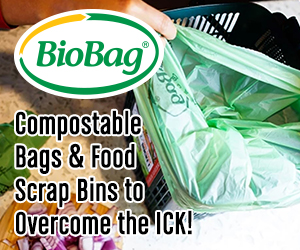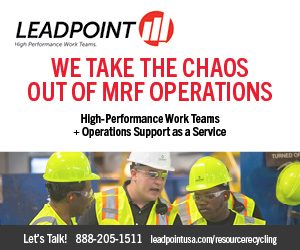
Technology developer Zabble is working with the University of California, San Francisco to reduce waste and increase diversion. | David Tran Photo/Shutterstock
A data collection and analytics platform is helping a California university improve its landfill diversion. In recent weeks, the platform has also helped combat the spread of COVID-19.
Technology developer Zabble offers a variety of tools and services for facilities to track their waste generation, recycling and disposal trends, with an eye toward reducing waste and increasing diversion.
Zabble offers an “end-to-end platform for institutions and other large organizations with zero waste goals,” said Nik Balachandran, founder of the Walnut Creek, Calif.-based company.
The company works with sustainability professionals and building managers to get access to data through a variety of channels. Then, Zabble interprets and reports that information in a format optimized to show areas where there is room for improvement on diversion, waste reduction and other goals.
One large campus that has begun using the Zabble platform is the University of California, San Francisco (UCSF). The medical science university has a goal to hit zero waste by the end of 2020, along with the nine other University of California campuses.
Zabble has helped UCSF to not only collect data more efficiently but provide a current look at waste trends without the usual time lag that occurs between collection and reporting.
“It’s always good to say, ‘These are live statistics. This is where things are now,'” said Daniel Chau, recycling and waste reduction program manager at UCSF.
Real-time waste audit
The platform brings in a variety of different types of data. By accessing hauler invoices for its clients, Zabble can provide a picture of how much material is leaving the facility and being collected by haulers.
But the platform takes data collection a step further. Zabble provides a mobile software platform that allows janitors to go out and “tag” recycling receptacles. That means observing how full receptacles are and noting obvious contaminants. For instance, if an employee sees polystyrene foam or other non-recyclable plastics in a recycling receptacle, that can be logged into the app.
That information is aggregated in real time and displayed on a dashboard alongside the hauling figures.
“They can make a comparison on what is being hauled, compared to what is actually being generated,” Balachandran said.
Balachandran compares and contrasts the Zabble platform with a traditional waste audit. It’s a similar concept, but the software platform aims to provide ongoing, real-time information about what a facility is generating, rather than a point-in-time snapshot.
“Everyone in the industry knows that waste changes. It’s dependent on the time. It’s seasonal,” Balachandran said. “Just capturing one data point is not sufficient if the organization really wants to solve this problem.”
Zabble receives revenue through a subscription model. Clients pay based on the number of users and buildings that employ the Zabble system.
Bay Area campus sees benefits
Chau of UCSF said the Zabble software helps with efficiency for the university. Manual data entry and analysis often took time and resources that were in short supply, Chau said, and the software platform helps reduce that strain.
Additionally, he pointed to the real-time data reporting capabilities as a key benefit the platform provides. In the past, the university has collected waste and recycling data in an analog format, and there was a delay between collecting and reporting that information.
“When we’re trying to educate our employee base, if you’re using data that’s not current, sometimes it may not be that accurate,” Chau said.
UCSF has 15,000 researchers and 4,000 students on its campus, and the facility generates close to 10,000 tons per year in its waste and recycling stream, Chau stated. It’s the second-largest employer, and second-largest generator of waste, in the city.
Zabble is helping the university particularly in high-use buildings such as restaurants, food halls or similar spaces. UCSF rolled out the company’s digital platform, with the goal of getting a better idea about the amount of material being generated, as well as the amount and type of contamination buildings were seeing.
The university has a small team of sorters who inspect and sort material entering the waste stream in those high-traffic buildings. The software gave them a convenient way to track what they were finding.
In a report on the university’s experience with the software, Zabble wrote that its mobile app “enabled staff to tap, swipe and easily document circumstances on the ground during their inspections, which was then immediately uploaded to the cloud and visible for supervisors to access in real time.”
Another significant benefit UCSF has received is being able to pinpoint contamination problems by location and time period, in order to target educational materials appropriately.
“It really helps us narrow the focus on, ‘How can we tackle that problem in that building?” Chau explained.
Platform evolves in the time of coronavirus
With most universities and other large facilities shut down during the COVID-19 pandemic, Balachandran has recently adjusted his platform to help in the coronavirus response.
Zabble last week announced it is “pivoting from Zero Waste to Zero Spread during the pandemic.” That means retooling the app to help medical facilities and other businesses tag and track personal protective equipment (PPE) waste and cut down on potential COVID-19 spread.
“With hospitals and essential businesses facing significant stress on their service capacity, PPE may be incorrectly disposed of,” Balachandran stated in the announcement. “Hospital staff are working long hours to save lives, while workers at essential businesses put in extra shifts to keep shelves stocked and ship out goods. If infected PPE ends up in the wrong bin, COVID-19 could unknowingly spread to workers who sort solid waste by hand.”
In the same way workers would tag contaminants in the regular recycling stream, the modified Zabble platform can be used to report and analyze where PPE is ending up in the wrong receptacles in facilities. The platform can be set up to send alerts to supervisors in such cases.
Zabble is also offering custom sign-generating software and other resources to display pertinent information about PPE disposal in essential workplaces.
More stories about data
- Michigan hits record recycling rate, awards millions in grants
- Missouri details state facility recycling data
- Maryland completes EPR needs assessment



